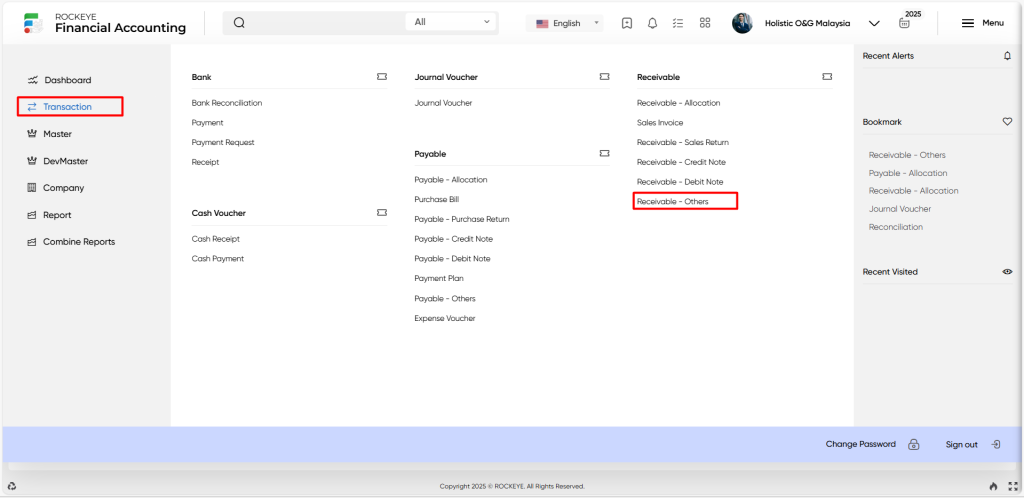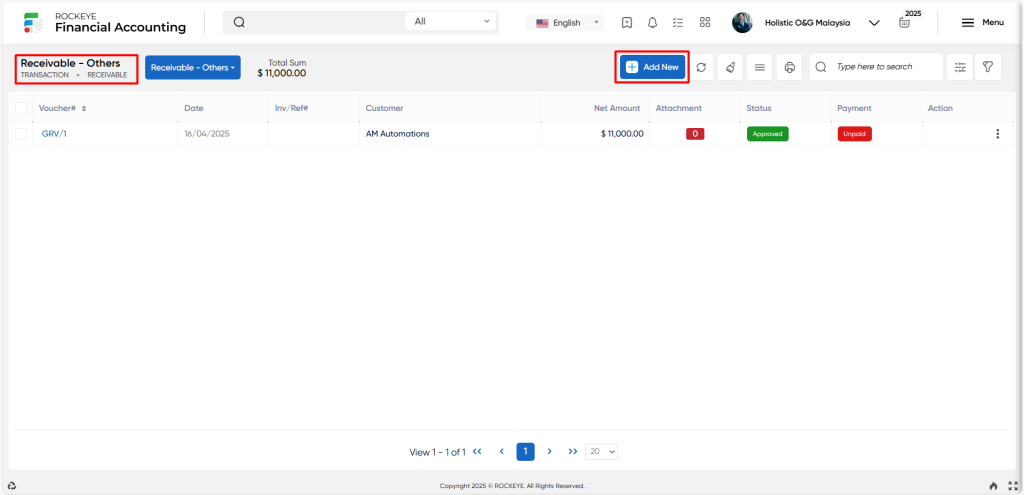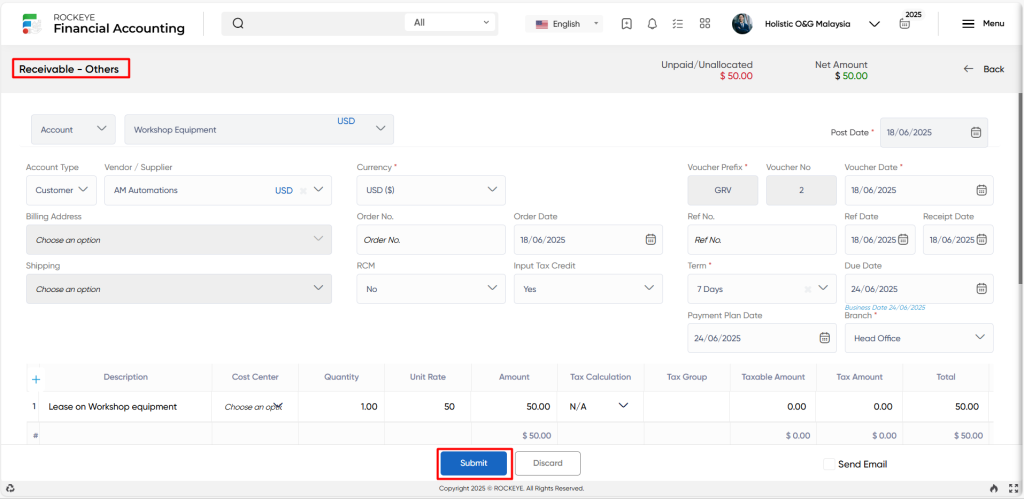Financial Accounting
Receivable others
Introduction/Purpose:
“Receivable Others” is a broad category or classification used to record and track a variety of receivable transactions that do not fit into any of the specified categories. It is a catch-all category for receivables that are difficult to categorise under more specific receivable kinds.
Dependency:
- Integration of the chart of accounts : To guarantee that transactions recorded under the “Receivable Others” category are appropriately reflected in the organisation’s financial statements, the Financial Accounting system should be coupled with the chart of accounts module.
- Integration of vendor/supplier,cost centre, profit centre : To guarantee that transactions recorded under the “Receivable Others” category are appropriately reflected in the organisation’s financial statements, the Financial Accounting system should be coupled with the vendor ,cost centre, profit centre and other modules.
How To Navigate:
The navigation includes the following steps for viewing the receivable others in the Financial Accounting system.

- Click on the transactions tab: The transactions can be accessed by clicking on the transactions tab on the side menu.
- Click on the receivable others: The receivable others can be accessed by clicking it from the receivable section.
Listing:
A receivable others listing in a Financial Accounting system is a feature which provides a list of all receivable others.

- Users can view the following information in the receivable others listing
- Voucher and date
- Inv/ref and customer
- General ledger and currency
- Exchange rate and taxable
- Net amount and net amount (lc)
- Attachment, payment, and status
User can perform the following actions
- Add new: The “Add new” function allows you to create and add a new receivable others to the system.
- Show all listing: The “Show all listing” function is to display and update a list or collection of receivable others within a system or interface.
- Clear cache: The “Clear cache” function clears the cached data associated with the receivable others.
- More options: The “More options” function provides the user with more actions or functionalities.
- Print records: The “Print records” function allows users to print content by opening a print dialogue or displaying a preview of the content to be printed.
- Search & Quick search: The “Quick search” function refers to the option that allows for detailed searches based on multiple parameters, while the ” Search” option allows for short searches based on keywords or selective terms.
Recording & Update:
Add New Receivable Other:

- Choose an option and CoA: The “Choose an option CoA” refers to the option where the user must select the chart of accounts with which this specific receivable other is related.
- Account type: The “Account type” refers to the field that is linked with the transaction, such as accounts payable or a specific category inside “Receivable Others.”
- Select a Vendor/Supplier: “Select a vendor/supplier” refers to the option that allows users to choose the vendor or supplier who is engaged in the payment transaction.
- Currency: The “Currency” refers to the field that denotes the monetary unit for the transaction amount and reflects the currency in which the receivable transaction is recorded.
- Exchange rate and date: The “Exchange date and rate” refers to the date and exchange rate used to convert the transaction amount into the reporting currency.
- Prefix voucher number and date: The “Prefix or reference number” refers to the payment transaction voucher number and the voucher date associated with the transaction.
- Billing address: The “Billing address” refers to the address to which the invoice or billing statement for the receivable transaction is mailed/sent.
- Order no. and date: The “Order no & date” refers to a payment transaction that is related to a purchase order, the order number and date represent the purchase order’s date.
- Due date: The “Due date” refers to which payment for the due transaction is expected to be made.
- Deal master, Profit centre, Cost centre, Quantity, Unit rate, Amount, Tax calculation, Tax group & so on: These terms refer to various details and attributes related to the receivable transaction, such as a transaction description, deal master information, allocation to profit centres or cost centres, quantity, unit rate, amount, tax calculation method, tax group, and other relevant information.
- Attachment, Narration, Tax breakup & Payment summary: These elements provide additional details and supporting information for the receivable transaction, such as attachments of relevant documents, narrations or comments, a tax breakup that shows tax components, and a payment-related information summary.
Users can perform the following actions
- Submit: The “Submit” function allows the user to submit the required information while creating a new receivable others.
- Discard: The “Discard” function allows the user to cancel the submission of information provided at the time of creating a new receivable others.